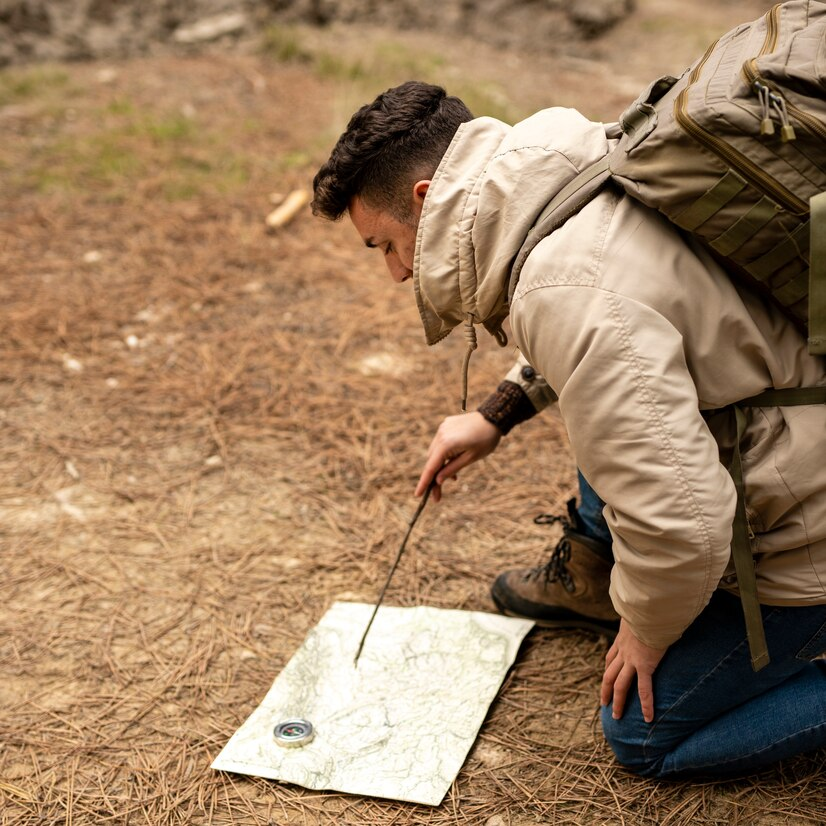
Vacant land investment in the United States is experiencing a notable surge in interest among both seasoned investors and newcomers. Unlike traditional real estate, land investment presents a unique opportunity: no structures to maintain, fewer tenants to manage, and a blank canvas for future potential. As urban sprawl continues and more people seek space for building, farming, or even simply holding land as a passive investment, the demand for vacant parcels is rising.
One of the main attractions of land investment is its relatively low barrier to entry. Investors can purchase significant acreage for a fraction of the cost of built properties. Moreover, vacant land often appreciates in value as development spreads. However, like any investment, the success of land ownership depends heavily on location. In this article, we explore the top five states in the US where vacant land investment holds the most promise, based on a range of essential criteria.
Understanding Before Investing in Land
Understanding the dynamics of vacant land investment is crucial for making informed decisions. Unlike buying homes or commercial buildings, land investment requires a different approach and mindset. There are no rental incomes (at least initially), but there's significant potential for appreciation and alternative uses that can yield profits.
With more Americans working remotely and trends pushing people away from crowded cities, rural and semi-rural land has gained appeal. Whether the goal is to build a dream home later, lease the land for farming, install renewable energy structures, or simply let the land value grow over time, selecting the right location is key. That is why we begin our deep dive into the top five states leading the way in land investment potential.
Evaluation Criteria

To determine the best states for vacant land investment, we considered several important factors. Each plays a critical role in influencing the value and usability of land. These include not just current affordability, but long-term growth prospects, legal and regulatory landscapes, and the potential for passive or active income generation.
Here are the key criteria used in our evaluation:
Average Price per Acre
Investors seeking value often prioritize states where land is available at a lower cost per acre. Some regions—particularly in the Midwest and parts of the South—offer large tracts of land at a fraction of the price compared to coastal or high-demand urban areas. Lower entry costs allow investors to acquire more acreage for the same budget, increasing potential returns if the land appreciates or is developed in the future. However, buyers should balance affordability with other key factors like location, accessibility, and growth potential to ensure long-term profitability.
Zoning and Regulatory Flexibility
Fewer zoning restrictions can make a piece of land far more valuable, as they allow for diverse uses such as residential development, agriculture, or renewable energy projects. States with flexible land-use policies enable investors to adapt to market trends without excessive red tape. For example, land zoned for mixed-use or with minimal building restrictions provides more opportunities for resale or development. Before purchasing, investors should research local regulations to avoid unexpected limitations that could hinder their investment strategy.
Population Growth and Demand
Areas experiencing rapid population growth typically see rising land values due to increased demand for housing, commercial space, and infrastructure. States like Texas, Florida, and Idaho—where migration trends are strong—often present prime opportunities for land investors. As more people move in, undeveloped land near expanding suburbs or employment hubs becomes more desirable. Tracking census data, job market trends, and migration patterns can help investors identify regions where land demand (and prices) are likely to rise.
Development Potential
Land with access to key resources—such as highways, utilities, or water—holds greater development potential and long-term value. Proximity to growing urban centers or future infrastructure projects (e.g., new highways, industrial parks, or renewable energy sites) can significantly boost appreciation. Investors should assess factors like road accessibility, utility hookups, and environmental conditions to determine whether a parcel is suitable for future building, leasing, or resale at a premium.
Property Taxes and Incentives
Lower property taxes and state-level incentives (such as agricultural exemptions or tax abatements) can enhance an investment’s profitability. States with favorable tax policies—like Wyoming, Nevada, or Tennessee—allow investors to hold land with minimal overhead costs. Additionally, some local governments offer incentives for sustainable land use (e.g., solar farms or conservation easements), further improving returns. Researching tax rates and potential incentives before purchasing can help maximize long-term gains while minimizing expenses.
Using these criteria, we've selected five standout states that consistently offer strong land investment opportunities.
Top 5 Best States for Vacant Land Investment
Texas
Texas continues to be a land investor's paradise, and for good reason. The Lone Star State boasts large expanses of undeveloped land, particularly in its western and central regions. While major metropolitan areas like Austin and Dallas are experiencing population booms, surrounding rural counties still offer affordable land with great access to infrastructure and growth corridors. Investors can find parcels as low as $3,500 per acre in some areas, while still being within driving distance to urban centers.
The state also benefits from investor-friendly zoning laws and a pro-development attitude. Texas has no state income tax, and its counties are known for low property tax rates compared to coastal states. The regulatory environment is relatively lenient, especially in unincorporated areas. Whether you're buying for agricultural use, future residential development, or simply to hold and flip, Texas remains a top-tier choice for land investors.
Florida
Florida offers a unique blend of strong population growth, tourism-driven demand, and still-affordable inland properties. While coastal areas may be cost-prohibitive, central and northern parts of the state have abundant land available at prices attractive to investors. Areas around Ocala, Lake City, and Gainesville, for example, have parcels selling for under $7,000 per acre.
The Sunshine State's growth is fueled by retirees, remote workers, and foreign investors, all of whom contribute to increasing demand for residential and recreational land. Florida also ranks high for short-term land use opportunities, such as RV parks, mobile home lots, or glamping sites. However, investors must stay aware of environmental regulations and floodplain concerns. Proper due diligence ensures profitable and sustainable investment.
Arizona
Arizona has long been a favorite for land investors, and its appeal hasn't waned. With vast deserts, stunning mountain views, and expanding urban regions, it offers land opportunities for both appreciation and passive income. Prices in rural Arizona remain affordable, with some parcels available for $2,000 to $5,000 per acre. Areas around Yavapai County, Apache County, and Mohave County are especially popular among out-of-state buyers.
One of Arizona's biggest advantages is its suitability for alternative uses. Investors often lease land for solar farms, RV storage, and even tiny house communities. Arizona's zoning laws in rural counties are generally lenient, making it easy to get creative with land use. With strong growth from Phoenix and Tucson pushing outward, well-placed parcels are poised for future value jumps.
Colorado
Colorado combines natural beauty with a thriving economy, making it an ideal location for land that serves both personal and investment goals. While metro areas like Denver are pricey, southeastern and western parts of the state still offer land at reasonable prices—often between $4,000 and $9,000 per acre. These regions also have the appeal of open space, fresh air, and access to recreational areas.
For investors, Colorado provides opportunities in eco-tourism and vacation rentals. Land near ski resorts or national parks can be developed into cabins or campgrounds. The state’s zoning regulations vary by county, but many rural areas are open to diverse land uses. While property taxes can be higher than in other states, the appreciation potential and lifestyle appeal balance the equation.
Arkansas
Often overlooked, Arkansas is one of the hidden gems of land investment in the US. With some of the lowest land prices in the country—often under $3,000 per acre—it offers a low-cost entry point for beginners or those looking to diversify. Northern Arkansas, in particular, has seen rising interest due to its natural beauty and access to lakes and forests.
The state is also favorable for agricultural investments and recreational land use. With low property taxes and minimal land use restrictions in rural counties, investors have flexibility to explore farming, timber, hunting leases, or future residential development. While Arkansas may not boast rapid population growth, its affordability and potential for long-term passive income make it an attractive option.
4. Summary Comparison Table
To help summarize the key differences, here's a snapshot comparison of the five states based on the criteria we've discussed:
State
Avg. Price/Acre
Growth Potential
Regulatory Flexibility
Passive Income Opportunities
Property Taxes
Texas
$3,500–$7,000
High
High
High
Low
Florida
$5,000–$10,000
High
Medium
High
Medium
Arizona
$2,000–$6,000
Medium–High
High
High
Low
Colorado
$4,000–$9,000
Medium
Medium
Medium
Medium–High
Arkansas
$1,000–$3,500
Low–Medium
High
Medium
Low
Investing in vacant land can be a smart, low-maintenance way to build long-term wealth. Whether you're looking for appreciation, a future building site, or passive income opportunities, choosing the right state is critical to maximizing returns.
Texas and Florida offer high growth and a robust market, ideal for those seeking aggressive returns. Arizona and Colorado provide a balance of lifestyle appeal and investment potential, while Arkansas presents a compelling option for low-cost, flexible investment. Ultimately, each state has its own strengths, and the best choice depends on your personal goals, risk tolerance, and timeline.
Before purchasing, it's crucial to conduct detailed due diligence, including checking zoning laws, access to utilities, environmental conditions, and property tax obligations.
Find Land with Lucas Land

Ready to start your land investment journey? Lucas Land is your trusted partner in discovering quality vacant land across the United States.
Why Choose Lucas Land?
1. Verified Listings
Every land parcel listed on our platform undergoes a thorough screening process by our expert team to ensure accuracy and reliability. We verify property boundaries, ownership history, and legal status so you can invest with confidence. Unlike unvetted marketplaces, our curated listings eliminate the risk of fraudulent or misrepresented properties, saving you time and reducing due diligence hassles. Whether you're looking for raw land, farmland, or a future homesite, our verification process guarantees transparency from the start.
2. Smart Filters
Finding the perfect piece of land is easier with our advanced search filters, tailored to match your specific needs. Narrow down options by intended use—whether it’s residential, recreational, agricultural, or pure investment. Additional filters like acreage, price range, terrain type, and proximity to amenities help you quickly identify properties that align with your goals. This targeted approach ensures you spend less time sifting through irrelevant listings and more time evaluating high-potential opportunities.
3. Free Land Investment Consultation
New to land investing? Our team of specialists offers free, no-obligation consultations to help you navigate your first purchase. We’ll discuss your objectives, budget, and risk tolerance while providing insights on market trends, financing options, and due diligence best practices. Whether you're buying land for future development, passive appreciation, or personal use, our experts will guide you toward informed decisions—without any hidden fees or sales pressure.
4. Zoning & Access Reports
Before committing to a purchase, instantly access detailed reports on zoning regulations, road accessibility, and utility availability for any listed property. Our platform provides up-to-date information on permitted land uses, building restrictions, and infrastructure connections—critical factors that impact development potential and resale value. With these insights, you can avoid costly surprises (like unusable land due to strict zoning) and focus on parcels that truly fit your investment strategy.
Whether you’re looking for wide open acreage in Texas or a peaceful forest lot in Arkansas, Lucas Land helps you invest with confidence.
👉 Visit lucasland.com today and explore thousands of listings tailored to your land investment goals.

Get a no-obligation offer in just a few minutes.





.webp)




.webp)
